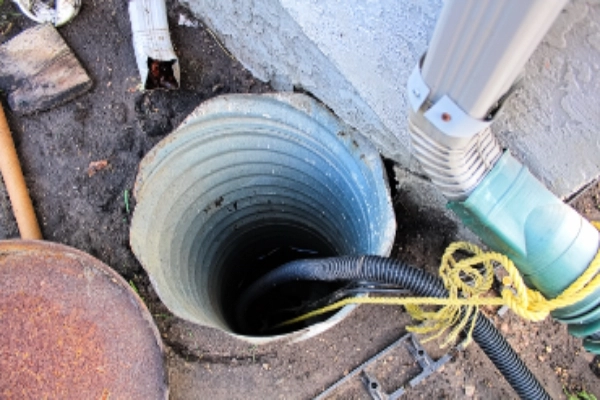
Sump pumps are a common fixture in houses across Canada. With our rainy and snowy weather, they play an important role in preventing water from accumulating in the basement and potentially causing extensive damage.
With spring underway, now is a good time for homeowners to make sure their sump pump is working properly. But what should you be looking for? The good news is that if you find water in your sump pump pit, you don’t necessarily have to be alarmed. It all depends on the amount: a low level of water is perfectly normal, while higher levels could be cause for concern.
What is a normal amount of water?
The way sump pumps are designed makes it common to find a few inches of water left in the pit after the pumping cycle ends or during periods of heavy rain.
To understand why it helps to understand the basics of how sump pumps work.
When you have excess water around your house — whether from heavy rain, rapid snowmelt, or seepage — it drains into the sump pump pit, which is placed in the basement below the lowest level of the house. Once the water level gets high, it activates a float switch. This turns the pump on, sending the water away from the house well before it can rise to the level of your basement floor and cause problems.
Since the pump only turns on when the water reaches the float switch, water that is below this will remain in the pit.
Too much water
A sump pump pit that is always full of water is a sign of a problem that needs to be investigated in order to avoid water damage to your foundation and basement.
If the water level is high enough to activate the pump continuously, even during dry periods, it could mean you have a steady flow of water coming into the pit from other sources. Or, a full pit could also mean elements of your sump pump aren’t working properly.
Potential problems
There are a few issues that could be causing your sump pump pit to be consistently full of water.
- Blocked discharge lines could be preventing the pump from sending the water away. These pipes can become blocked with debris or, in Canada’s climate, with frozen water in the winter.
- Burst pipes could be causing a continuous flow of water into the pit. This could be due to broken sewer pipes or even a broken sprinkler system in your yard.
- A broken or stuck float switch could mean the pump isn’t being activated properly.
- A faulty check valve could be causing water to flow back into the pit after being pumped out.
- Electrical failure, such as a power outage during a storm, will prevent the sump pump from operating unless you have a backup power source in place.
No one wants to deal with the headache of flooding and water damage in their home. Since problems with your sump pump could have a variety of causes, it’s best to have it checked out by an experienced professional. The plumbers at Mr. Rooter can diagnose and inspect not just your sump pump, but your whole house, to help prevent problems before they start.

